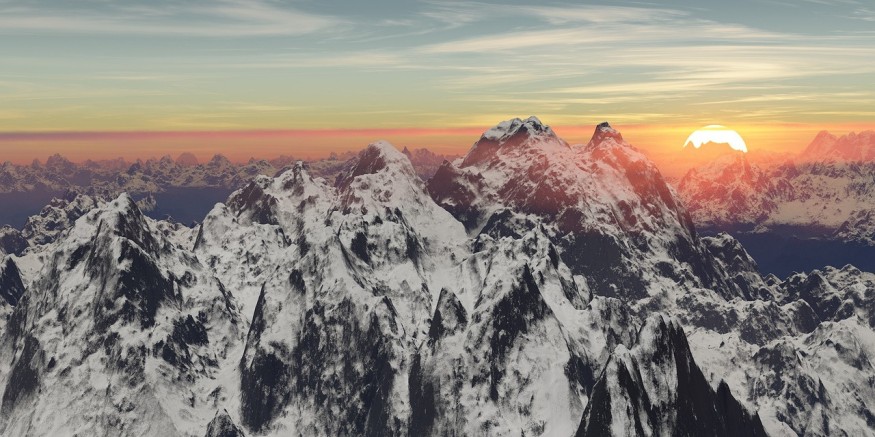The forces propelling the growth of the Himalayan mountains are rooted deep within Earth. While geologists understand the mechanisms, a recent seismic analysis in southern Tibet presented at the American Geophysical Union conference revealed surprising details of the Indian plate disintegrating beneath the Eurasian plate.

Himalayan Growth: Plate Convergence and Subduction Uncertainties
The Himalayas are experiencing growth due to the convergence of the Indian and Eurasian tectonic plates beneath the massive mountain range. While subduction typically occurs when a denser oceanic plate slides beneath a lighter continental plate, the collision between two similarly dense continental plates complicates the prediction of which plate will dominate. The scientific community remains uncertain about the exact processes occurring beneath Tibet in this collision.
Diverging theories propose different scenarios. Some scientists suggest that the Indian plate may be sliding beneath the Eurasian plate without substantial subduction, a process known as underplating.
Alternatively, other researchers propose that deeper segments of the Indian plate might be subducting, while the upper sections resist movement against the bulk of Tibet. The complexity of the situation makes it challenging to pinpoint the exact geological activities beneath the Himalayas.
Recent research, titled "Slab tearing and delamination of the Indian lithospheric mantle during flat-slab subduction, southeast Tibet" available in a pre-print server, introduces a novel perspective by proposing a potential combination of these theories.
The study presents evidence indicating that the Indian plate is indeed subducting, but concurrently, it is undergoing warping and tearing, leading to the upper half delaminating or peeling away. This revelation challenges previous assumptions about the behavior of continents and represents a groundbreaking insight in solid earth science.
To enhance the understanding of the intricate processes beneath Tibet, researchers analyzed earthquake waves traversing the crust at the collision site. By reconstructing images from these seismic waves, the scientists identified apparent tears in the Indian plate's crust.
The varying depths observed, ranging from 124 miles (200 kilometers) to 62 miles (100 km), suggest regions where portions of the plate have peeled away, providing a more nuanced comprehension of the multifaceted dynamics in this region.
Utilizing Seismic Data and Identifying Delamination
Led by Ocean University of China geophysicist Lin Liu, the research team utilized seismic data from 94 stations across southern Tibet. They combined 'up-and-down' S-wave and shear-wave data with 'back-and-forth' P-wave data, revealing the Indian slab's dynamics.
Contrary to smooth or bunching movements, the study identifies delamination, with the dense base sinking into the mantle while the lighter top continues just beneath the surface. This empirical evidence aligns with geological models, providing a 3D understanding of plate boundaries for seismic predictions.
The team's findings, supported by helium-3 enriched spring water and surface fractures, depict the carnage below. Some sections of the old Indian plate remain intact, while others strip apart around 100 kilometers below, warping into the molten core. This detailed description enhances comprehension of Earth's surface and holds potential for improved earthquake prediction methods.
Earlier research, published in 2022 in PNAS, demonstrated helium variations in geothermal springs, particularly helium-3 from mantle rocks and lower helium-3 concentrations from the crust. This mapping revealed the current plate boundary just north of the Himalayas.
While the new research could identify heightened earthquake risk along the plate boundary, scientists are yet to comprehend how tearing and warping in the crust's depths relate to surface stress buildup.
RELATED ARTICLE: Himalayas Tibetan Plateau Unique Tectonic Construction Uncovered; What's Behind It's Decades-Long Mystery?
Check out more news and information on Earth Science in Science Times.










